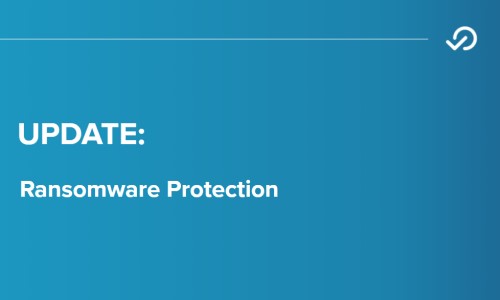
Without a doubt, one of the top things on your mind (after the pandemic) is the threat of a ransomware attack. It’s a growing threat, with more than 174 municipal instructions suffering attacks in 2019, up more than 60% from 2018.
It’s so pervasive – and potentially lucrative – that there’s “Ransomware-as-a-Service” (RaaS) now so that criminals that can’t code can get in on the action.
Rebuilding the publics’ trust after an attack is something that could take years. And as we rely more and more on technology, technology and information will be critical to moving your organization forward. To make sure that you are doing all you can and staying a step ahead of the bad actors, here are 7 things you can do.
1. Make sure that you have secured offsite backups available.
Having a copy of the information that hackers haven’t and can’t access is a great safeguard and dramatically lessens the potential impact an attack can inflict, as well as the value in a ransom.
2. Conduct security awareness training for everyone.
Everyone in your organization needs to understand that they are a critical part of any defense plan against cyber attacks. Demonstrating and showing examples of the different types of attacks, how to identify them, and what to do if they think they’ve received a suspicious message is important knowledge everyone should have.
3. Minimize access to just required users.
It just makes sense that the fewer people with actual access to systems and applications, the less exposure you have to outside risks. Controlling access on an as-needed basis goes a long way.
4. Remove unused software functionality.
Trimming your tech stack to the applications your team actually uses minimizes the surface area for attacks. Left with applications that are used frequently assures that any potential irregularities have a better chance of being spotted.
5. Consider ransomware insurance to cover potential losses.
The demand for the average municipality data ransom was $1 million. Specific ransomware or cyber extortion insurance can help protect against hacks and with negotiations and data recovery. Depending on your solution, you might already have some coverage.
6. Always use the most current software versions available.
All reliable software vendors are continuously making updates to their software to protect against vulnerabilities. At the same time, bad actors look for old versions of software that aren’t protected by updates and provide easy access.
7. Subscribe to alert systems about current threats and vulnerabilities.
Things change daily, if not by the second in the cyber-world. Leverage the security networks to be aware of attacks as soon and minimize the risk and potential damage that can be inflicted;
Vermont Systems is here to help and keep you prepared for the future in every way we can. Download our security whitepaper to learn more. If you have any questions or want to explore the inherent safeguards in Vermont Systems hosted solution against ransomware attacks, contact us for a quick consultation.